Messier 8 (M8), also known as the Lagoon Nebula, is a large, bright emission nebula located in the constellation Sagittarius. The star-forming nebula has an apparent magnitude of 6.0 and lies at a distance of 4,100 light years from Earth. It has the designation NGC 6523 in the New General Catalogue.
The Lagoon Nebula is currently undergoing a period of active star formation and has already formed a sizable cluster of stars. NGC 6530, the extremely young open cluster formed from the material of M8, has a visual magnitude of 4.6 and covers an area of 14 arc minutes in the sky. It is centred in the eastern part of the nebula.
NGC 6530 is classified as Trumpler type II 2 m n, which means that it is a detached cluster with little central concentration (II), that its stars scatter in a moderate range of brightness (2), that it is medium rich in stellar population, with 50 to 100 stars (m), and associated with a nebula (n).
The cluster is only about 2 million years old. The hot young stars in it are responsible for the nebula’s glow. The brightest star in the cluster belongs to the spectral class O5 and has an apparent magnitude of 6.9.
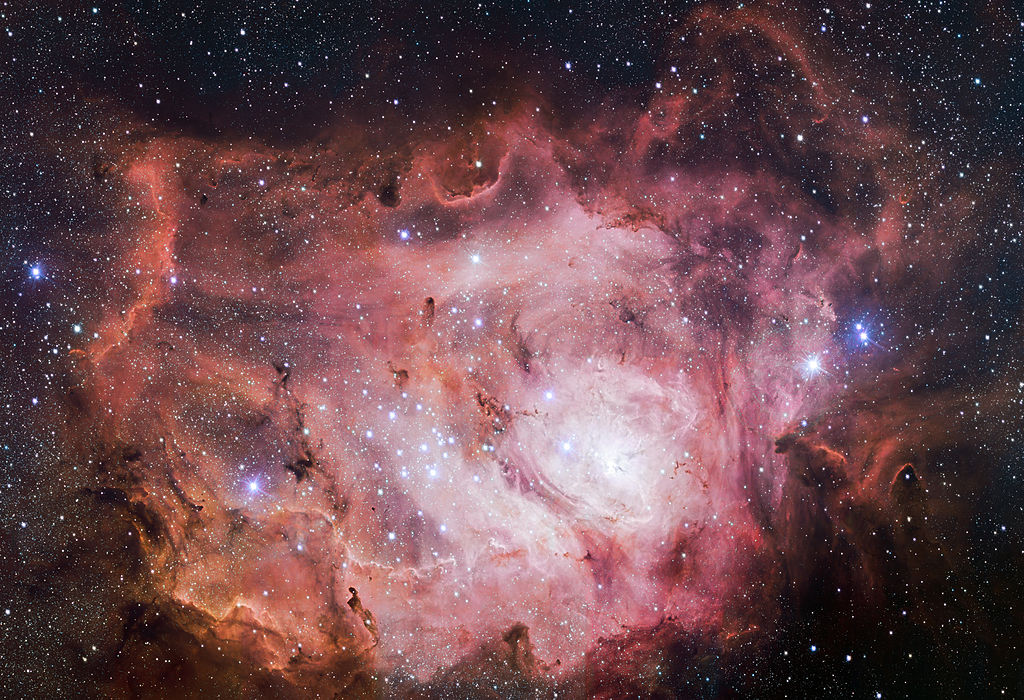
The large, lagoon-shaped band of dust seen to the left of the cluster’s centre is what earned the Lagoon Nebula its name. The faint extension of the nebula to the east, spanning about 25 light years, has its own designation in the Index Catalogue of Nebulae and Clusters of Stars: IC 4678.
Messier 8 never rises very high above the horizon for observers north of the equator, but can be seen in the summer months, when Sagittarius is prominent on the southern horizon when observed from northern latitudes.
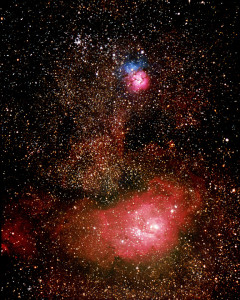
M8 is located just above and to the right of the Teapot asterism in Sagittarius. It can be found about 5 degrees west of Lambda Sagittarii, the star that marks the top of the Teapot.
The nebula’s apparent size is about three times the size of the full Moon. The surrounding region contains a number of notable deep sky objects, starting with the Trifid Nebula (Messier 20), which lies only half a degree north of the Lagoon.
The open cluster Messier 21 and the globular cluster Messier 28 also lie in the vicinity. The globular cluster NGC 6544 is located a degree to the southeast of M8, and NGC 6553, yet another globular, lies another degree to the southeast.
Messier 8 covers an area of 90 by 40 arc minutes, which translates into an actual diameter of 110 by 50 light years.
M8 was discovered by the Italian astronomer Giovanni Battista Hodierna before 1654. Hodierna listed the nebula as No. II.6 in his catalogue.
English astronomer John Flamsteed discovered the object independently around 1680 and added it as No. 2446 to his catalogue.
In 1746, Swiss astronomer Jean-Philippe Loys de Chéseaux resolved some of the stars in M8 and classified it as a cluster.
The following year, French astronomer Guillaume Le Gentil observed both the Lagoon Nebula and the associated cluster. In his Memoir of a Nebulous Star (Mémoire sur une étoile nébuleuse, 1749), he provided the following description:
The first [nebula] is between the left heel of Serpentarius [Ophiuchus] & the bow of Sagittarius, to the west of a star cluster which is located in this place in the sky, & which appears the same at eyesight, rather resembling the nebula of Cancer [Messier 44]: That nebula has exactly the shape of an equilateral triangle, a bit elongated, & the turning point to the south-west. I have observed it with a refractor of 18 to 20 feet [FL], & it always appeared to me nebulous & transparent; it touches with its base a rather beautiful star, seen in the refractor, & which is the brightest of all those which compose the star cluster I have mentioned. The right ascension of this star is for the beginning of 1748, 266d 44′ 22″ [17h 46m 57s], its southern declination, 25d 8′ 10″, its [ecliptical] longitude, 26d 45′ 00″, & its southern [ecliptical] latitude 1d 30′ 00″.
Nicolas Louis de Lacaille listed the nebula in his 1751-52 catalogue as Lacaille III.13 and described it as “three stars enclosed in a drag of a nebula parallel to the Equator.” The category III in Lacaille’s catalogue was reserved for “nebulous stars.”
Charles Messier added the object to his catalogue as Messier 8 on May 23, 1764. Messier found both the nebula and the star cluster, but primarily described the cluster in his entry:
A cluster which appears like a nebula in an ordinary telescope of 3 feet [FL] but with an excellent instrument, one perceives nothing but a large number of small stars; near this star cluster is a fairly bright star, surrounded by a very faint glow: this is 9 Sagittarii, of 7th mag, according to Flamsteed: this cluster appears in elongated shape, extended NE-SW, between the arc of Sagittarius & the foot of Ophiuchus. (Diam. 30′)
The German-British astronomer William Herschel catalogued two objects within M8 separately: H V.9 (GC 4363, NGC 6526) and H V.13 (GC 4368, NGC 6533). His son John Herschel listed the cluster NGC 6530 separately as h 3725 (GC 4366) and catalogued the Lagoon Nebula as h 3723 (NGC 6523, GC 4361).
Messier 8 is one of two star-forming nebulae that can be seen without binoculars from mid-northern latitudes. The other one is the Orion Nebula, or Messier 42 (NGC 1976), the famous diffuse nebula located in Orion constellation.
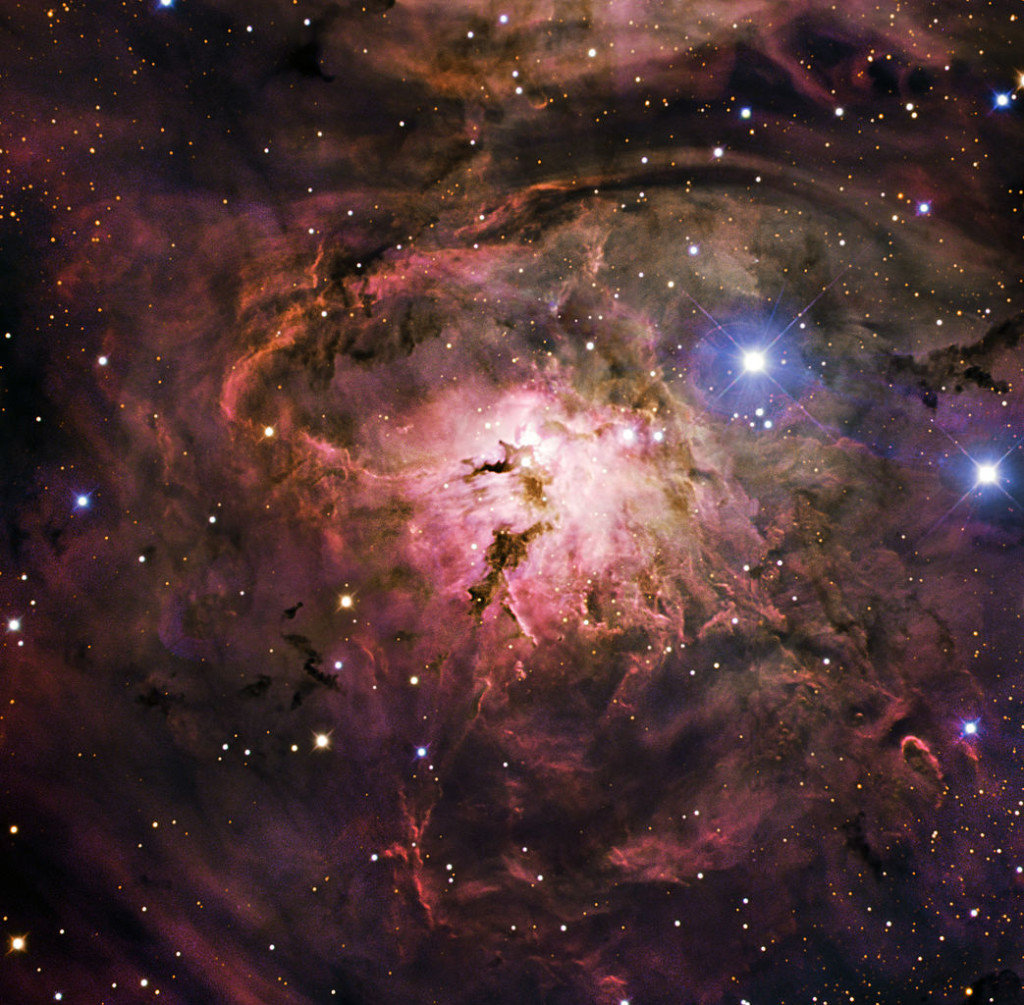
In binoculars, the Lagoon Nebula appears as an oval-shaped patch with a visible bright core and a star cluster superimposed on it. Small telescopes reveal two distict regions separated by a dark lane of dust.
8-inch and larger instruments show more dark bands through the central region, a brighter core, knots and other details of the nebula.
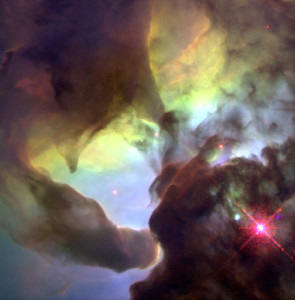
Messier 8 contains many Bok globules, or dark clouds of dense dust, in which new stars are being formed. These dark nebulae are collapsing protostellar clouds of material about 10,000 astronomical units in diameter.
The most prominent Bok globules in the Lagoon Nebula were catalogued by the American astronomer Edward Emerson Barnard as Barnard 88 (B88), Barnard 89 (B89) and Barnard 296 (B296).
B88 is comet-shaped and 0.5′ wide, and it extends from north to south for 2.7′ just above the star 9 Sagittarii. B296 is long and narrow, and can be seen at the nebula’s south edge, while B89 is found in the region of the open cluster.
Messier 8 also contains a region known as the Hourglass Nebula, a bright knot of dust and gas, located in the nebula’s bright central region.
The Hourglass Nebula was named by the English astronomer John Herschel, who discovered it. It should not be confused with the more famous Engraved Hourglass Nebula (MyCn 18), which lies in the constellation Musca, the Fly.
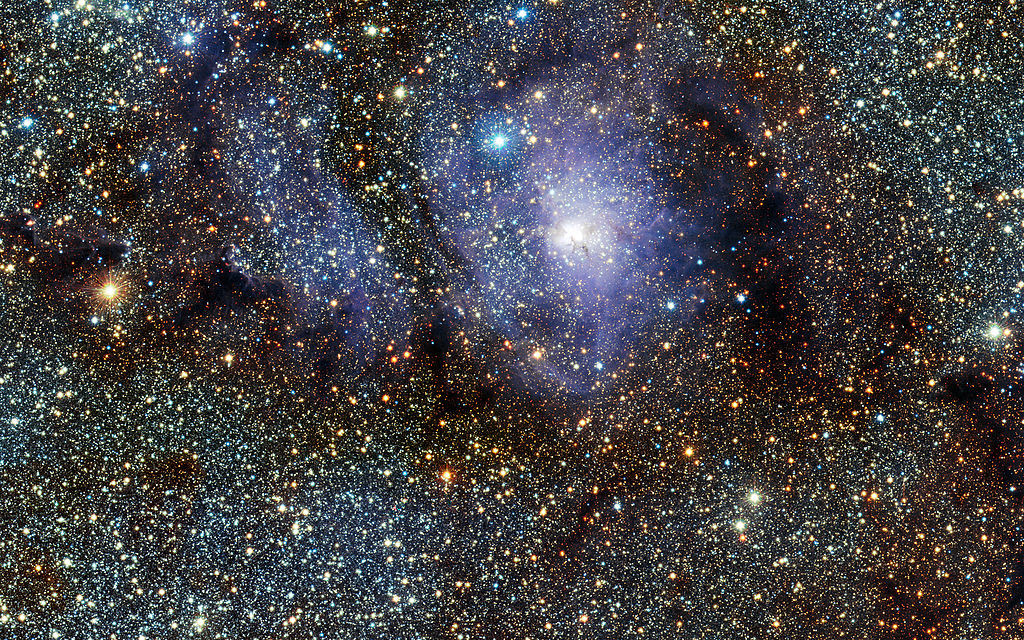
The brightest region of M8 is a site of ongoing star formation. The Hourglass is illuminated by the extremely hot, young stars. It lies near 9 Sagittarii, one of the brightest stars associated with Messier 8. 9 Sagittarii belongs to the spectral class O5 and has an apparent magnitude of 5.97.
The Lagoon Nebula also contains funnel-like structures, created by an O-type star emitting ultraviolet light that heats up and ionizes the gases on the surface of M8. There are at least two such structures in the nebula’s central region, each spanning about half a light year. The area is illuminated by Herschel 36, an extremely bright star with the stellar classification of O7 V and a visual magnitude of 9.5.
The first direct proof of star forming activity by accretion within M8 was discovered in 2006, when scientists found the first four Herbig-Haro objects within the Hourglass structure. Herbig-Haro objects are small patches of nebulosity that are formed when jets of gas ejected by newly formed stars from their poles collide with nearby dust and gas at high speeds. They are frequently found near very young stars.
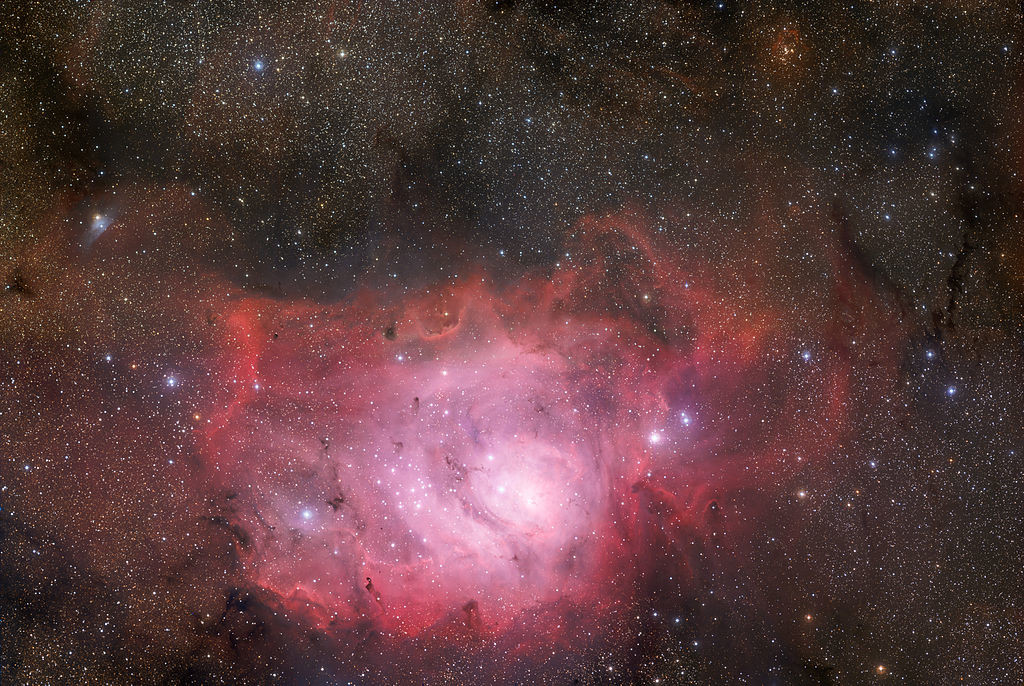
FACTS
|
LOCATION
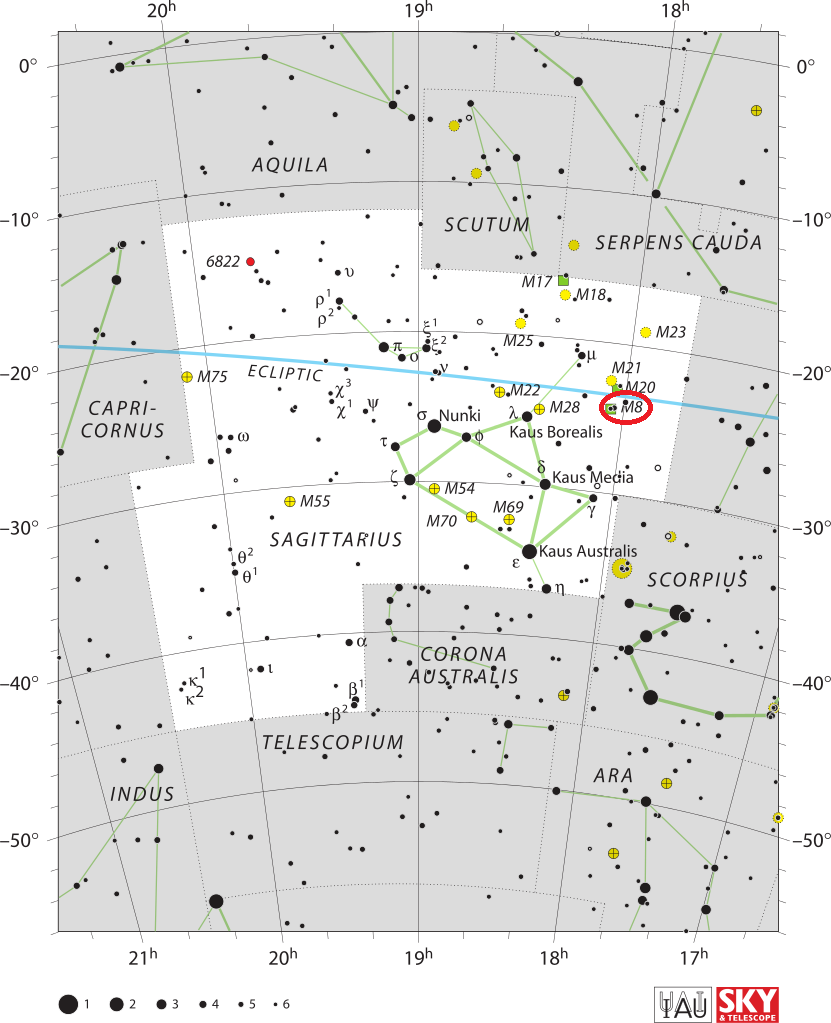
IMAGES
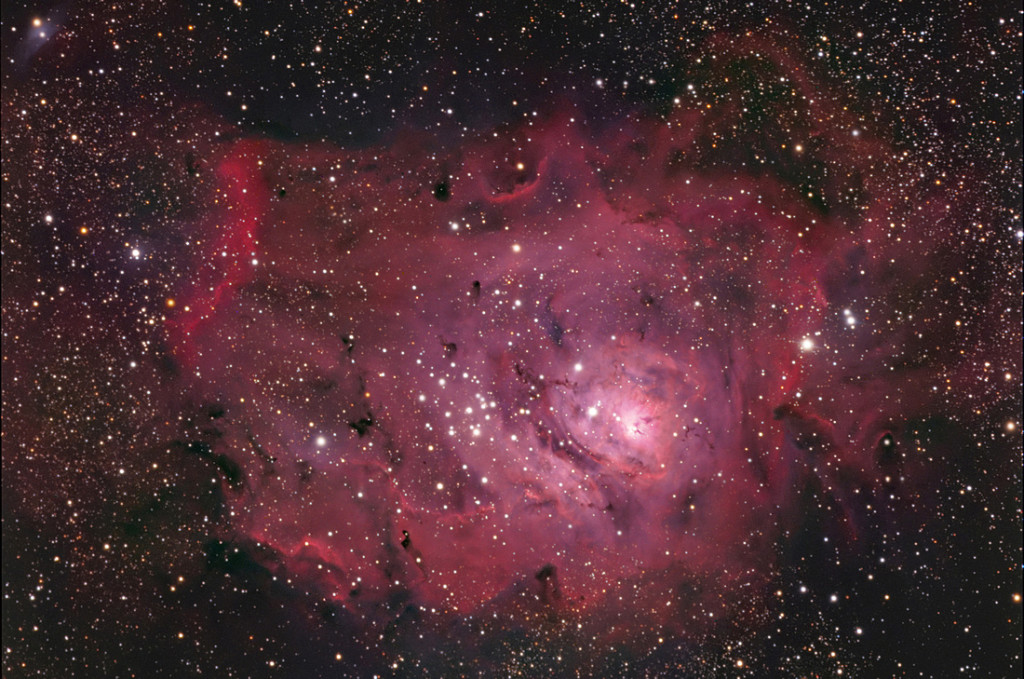
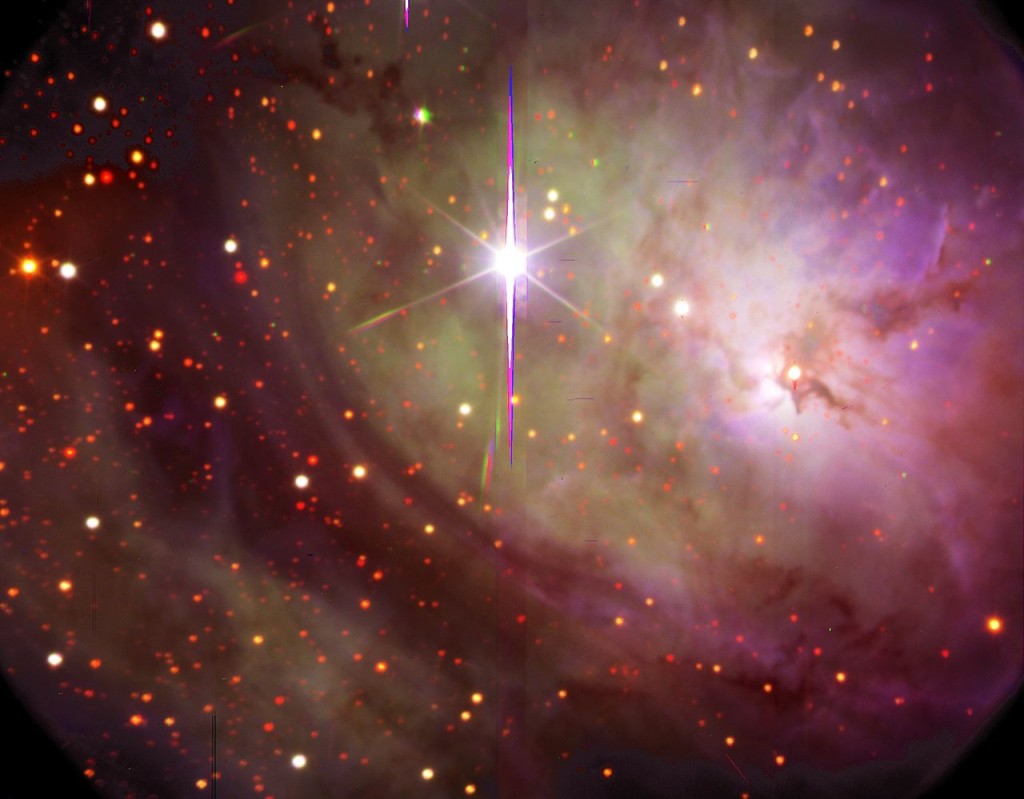
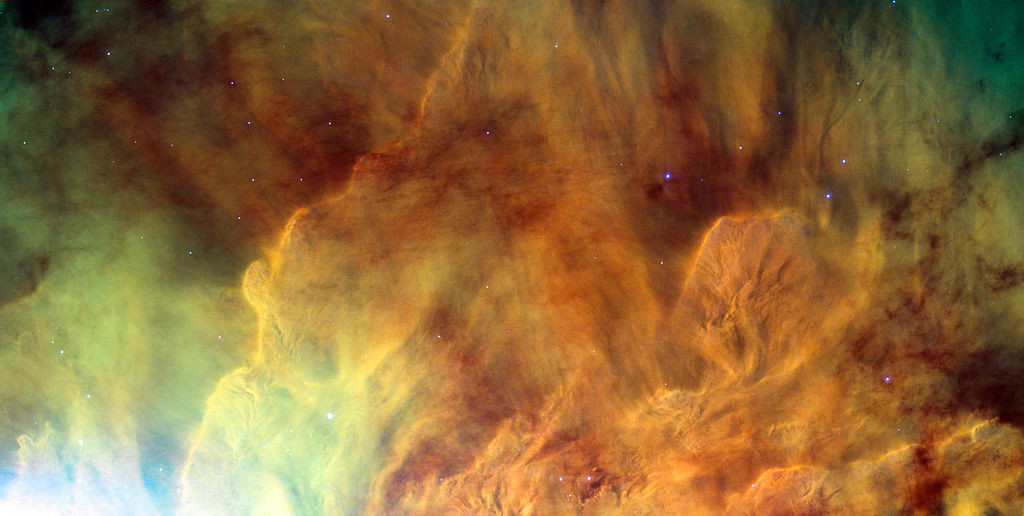
This picture was created from exposures taken with the Wide Field Channel of the Advanced Camera for Surveys on Hubble. Light from glowing hydrogen (through the F658N filter) is coloured red. Light from ionised nitrogen (through the F660N filter) is coloured green and light through a yellow filter (F550M) is coloured blue. The exposure times through each filter are 1560 s, 1600 s and 400 s respectively. The blue-white flare at the lower left of the image is scattered light from a bright star just outside the field of view. The field of view is about 3.3 by 1.7 arc minutes. Image: ESA/Hubble & NASA